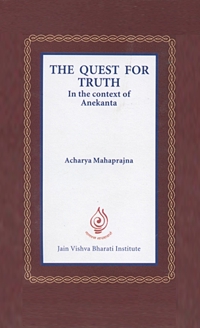
Philosopher-saints have explained the world in many ways. According to Sankaracharya, the apparent world is not real. The question then is what is this world? The answer is that it is maya or illusion. It is an experience of the unawakened state. You dreamt of a lion and got scared. When you came to the awakened state, this fear vanished. The lion of the sleeping state is not the lion of the awakened state. In the awakened state the lion of the sleeping state has no validity. The visible world is vyavaharik truth that is empirical truth, not transcendental truth. That which we are seeing in our awakened state and think is real, that will also turn into an illusion when we reach the state of Brahman, just like the dream dies on awakening. This way Sankara explained the world as lying between two truths, the vyavahar or empirical truth and the paramarth truth or the transcendental truth. Brahman is the paramarth truth and the apparent world vyavaharic truth.
Buddhism has also defined the world in terms of transient truth and the supreme truth. According to it both the sentient and the insentient are in a state of flux. This is the supreme truth. Their appearance as one over the three periods of past, present and future is transient truth. Possibly both these truths have influenced the perspective of the Vedas. Sankara's grand-teacher Gaudpad was a great Buddhist scholar. It is possible that his influence over Sankara is responsible for Sankara's definition of maya (illusion).
Jain philosophy explained the world on the basis of anekanta. According to anekanta infinite attributes exist in a substance. As many attributes as there are, so many perspectives there are, so many ways of expression there will be. If we analyse all the standpoints then they can all be categorized into two basic perspectives; the naishchiyik nay (transcendental) and vyavaharik nay (empirical). According to the former both sentience and insentience are the eternal and factual truths. According to the latter the modes of both of the substances, sentience and insentience are not eternal but still factual truths.
If transcendental perspective of truth explains the reality from the substantial point of view, the empirical standpoint explains the different transformations taking place in the substance. According to vyavaharik nay sugar is sweet and white but according to naishchik nay it has all the colour, taste, smell and touch. In can be conclusively said that both sentience and insentience are absolute truths and the changes taking place within them are relative truths. Vastavik (actual) truth is that which takes into account both the absolute and the relative truth.
 Acharya Mahaprajna
Acharya Mahaprajna


